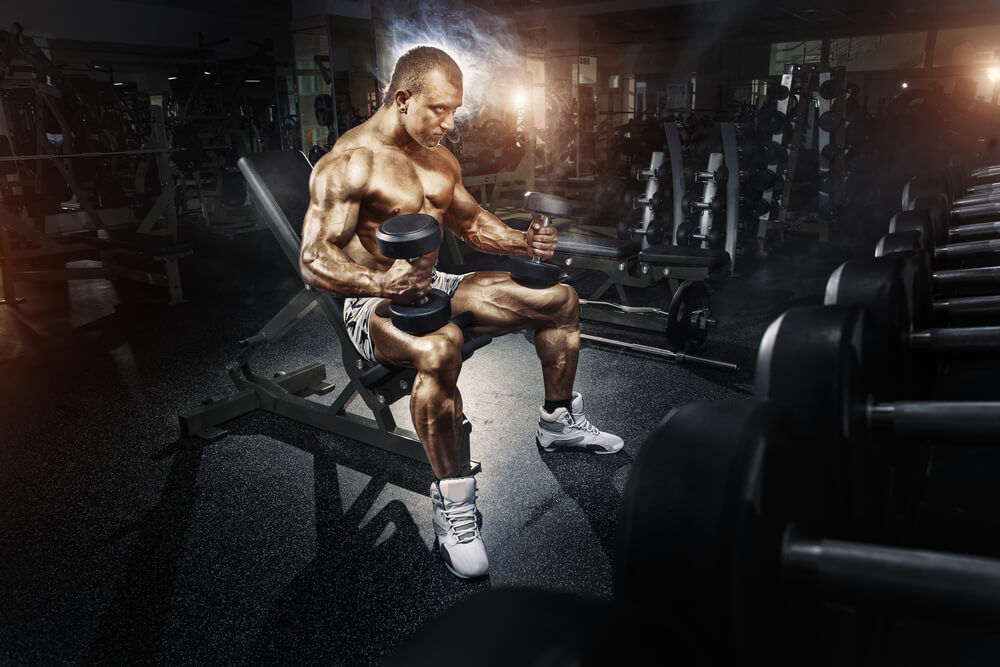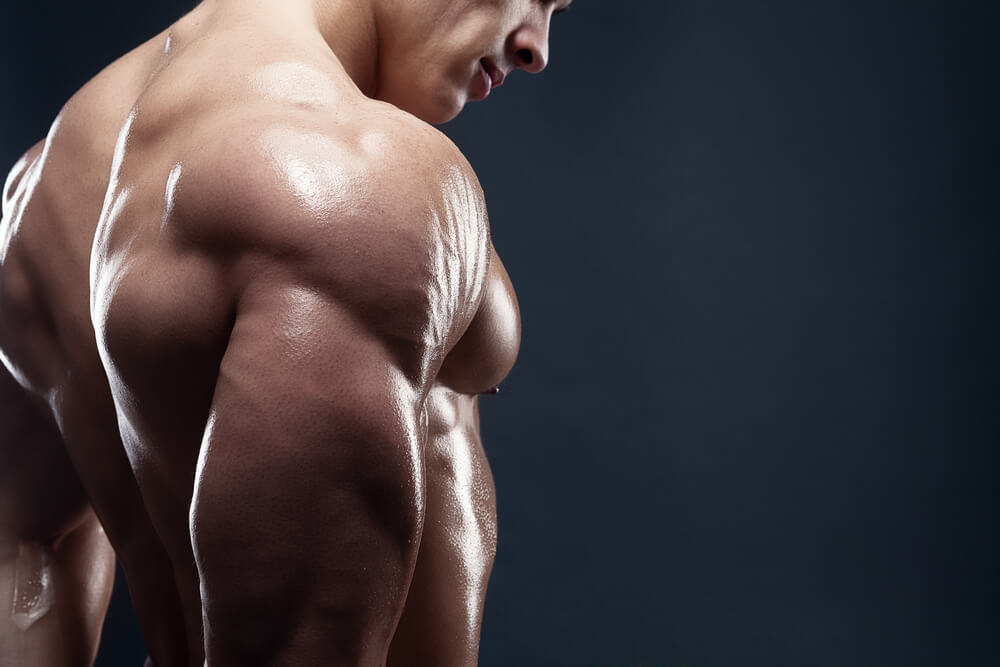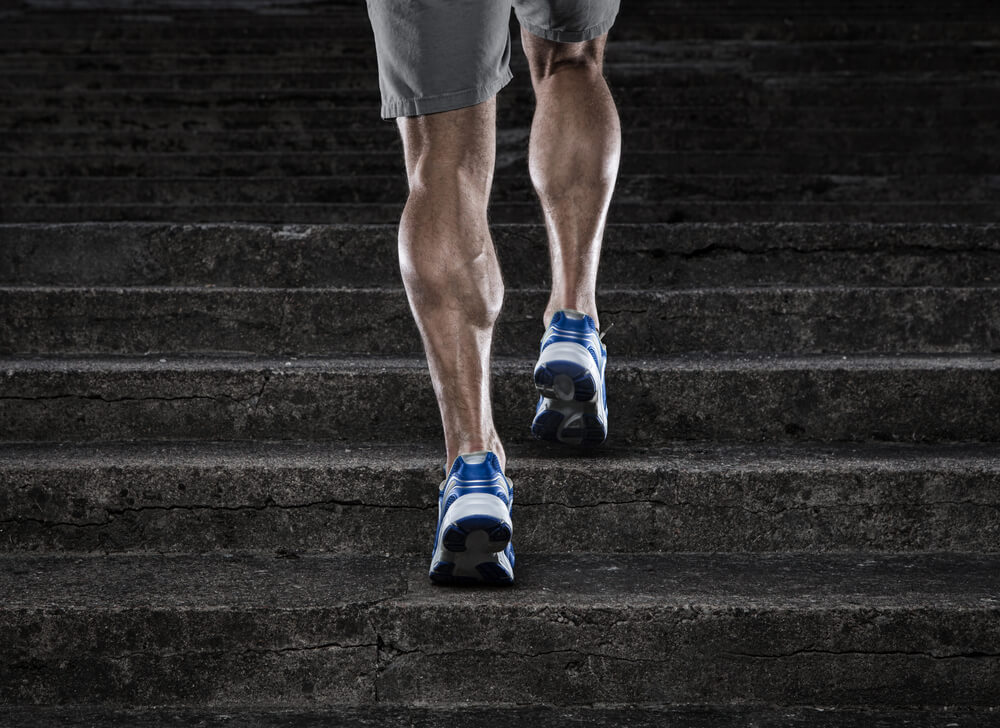
Hitting the gym without a plan is pointless. Doing a workout and not hitting your muscles with the right finishing move for optimal growth is just as bad. Here’s your guide to finishers.
Any experienced lifter can walk into a gym and know how to do a few exercises for every part of the body, and as such will develop a fairly impressive chest, a thick back and big, well-defined shoulders and arms. One of the main things that separate the fitness models from the rest of us is how they finish their workout.
Try using a couple of the following moves at the ends of your workouts and watch your physique go from good to great. Be sure to use weights that’ll allow you to hit the suggested rep count, but not be able to do more. By doing so, you’ll crush your old max lifts with new numbers you never thought possible.
Chest
How I Do An Incline Cable Flye/Press?
Set up a bench at an incline between the pulleys of a cable cross machine. The pulleys should be set all the way down.
Hold both handles with your hands together and then press straight over your chest. With straight arms, slowly lower the handles back towards the pulleys until you feel a stretch in your chest. Then, with open hands, bring the handles back together over your chest, driving your elbows together. Then, keeping your elbows tight to your body, bring the handles to your chest and press them back up over your chest. That’s one rep.
This Is Why This Move Works
When it comes to muscle size and strength, there are three methods that have been tested and are proven to work. One such method is to use moves that include high muscular tension, which this method highlights. Due to the use of the cable cross, the lifter keeps the chest under tension for the duration of the exercise. The more tension the better.
Sets: 4 Reps: 12
Back
How Do I Do A Single-Arm Lat Pulldown?
Attach a D-handle to a lat pulldown station. Sit as in a normal lat pulldown and with an overhand grip, grasp the D-handle with your right hand. Draw your right shoulder blade down and back. This is the start position.
Maintaining good posture, drive your right elbow towards your right hip until your thumb is in line with the top of your shoulder. Pause and then slowly return to the start position. When reps listed are completed, switch sides and repeat.
This Is Why This Move Works
As discussed, there are three methods to increasing muscle size and strength, and this move allows the lifter to use two of three methods. By keeping the shoulder blade down and back for the duration of the set, the lat on the side that is working stays under tension for a long period of time. Also, this move allows the lifter to use a significant amount of weight (but not so much that the lifter’s grip fails), due to being held in place at the lat pulldown station.
Add to that the amount of tension the core is under, and the lifter has a huge anabolic response, resulting in growth hormone and IGF-1 (insulin-like growth factor 1, an important anabolic hormone) release. This hormonal response, along with the testosterone circulating in the blood from the big moves at the beginning of the workout, leads to an efficient, effective way to finish off a good back workout.
Sets: 4 Reps: 6 each side

Shoulders
How Do I Do A Behind-The-Back Cable Lateral Raise?
Attach a D-handle to the low pulley of a cable-cross station. Grasp the handle in your right hand and hold it at your side so the cable falls across the back of your legs. Place your feet directly next to and in front of the pulley. Hold on to the cable cross and lean out so your body is at a 30-degree angle to the vertical (or close). Draw your right shoulder down and back. This is the start position.
Keeping your arm straight, raise your right arm out to the side until it’s parallel to the floor. Pause and slowly return to the start position. That’s one rep. When reps are complete, switch sides and repeat.
This Is Why This Move Works
To directly target the whole deltoid group (anterior, medial and posterior), many different angles need to be worked. By using a cable cross and starting with the hand behind the back, the lifter bypasses the need to do many variations of the standard lateral raise, because the angle changes as the weight is lifted. As has been the theme thus far, it also keeps the deltoids under tension for a long period of time, utilizing one of the three methods to increase muscular size and strength.
Sets: 3 Reps: 12
Traps
How Do I Do A Dork Row?
Grasp a pair of dumbbells with a neutral grip (palms facing in) and hold them by your sides. Lean over slightly with a straight back and let the dumbbells hang naturally. This is the start position.
Pull your elbows up and back so that your shoulder blades pinch together and stay depressed. Pause and slowly return to the start position. That’s one rep.
This Is Why This Move Works
Aptly named, this move looks exactly like something a dork or beginner would do at a gym. Without knowing, that dork would be doing one of the most effective trap builders.
Again, this move allows for a high amount of muscular tension. As well, because it’s a bilateral (both sides at the same time) and stable start position, the lifter can use heavy weight to perform a set, the second of three methods proven effective in increasing muscle size and strength. Also, this move works the whole trapezius muscle, whereas the standard shrug only works the upper fibers.
Sets: 4 Reps: 8
Biceps
How Do I Do A Supinating Dumbbell Curl?
Grasp a pair of dumbbells and hold them at your sides with a neutral grip, shoulders drawn down and back. This is the start position.
Draw your elbows slightly backward and begin to curl, while turning your hands palms-up. By the time the dumbbells reach your shoulders, your palms should be facing you. Slowly return to the start position.
This Is Why This Move Works
While the biceps are collectively an elbow flexor and the main muscle associated with big, strong arms, one thing unknown to many is that the biceps is also a powerful supinator; it turns your hands palm-up. Adding that slight rotation during a standard curl gives the biceps that extra bit of stimulus it needs to grow and change.
Sets: 4 Reps: 10
Triceps
How Do I Do A Rolling Skullcrusher?
Lie face up on a bench holding a bar with an overhand, shoulder-width grip. Press the bar straight over your chest. This is the start position.
Slowly allow your elbows to bend while simultaneously letting your upper arms drift backwards, bringing the bar behind your head. When the bar reaches the top of your head, reverse the motion to return to the start position. That’s one rep.
This Is Why This Move Works
The triceps and lats have one muscle action in common: They both bring the elbows down towards the body from an overhead position.
Allowing your arms to drift back during this exercise hits the medial head, an often-neglected part of the triceps. This is the muscle that gives arms their thick appearance and helps your bench press numbers go up. Again, the nature of the load ensures that tension is high and, because it’s technically a compound move, the lifter can use a significant amount of weight, forcing change in size and strength of the muscle.
Sets: 4 Reps: 12
Quads
How Do I Do A High Step Up?
Stand in front of a box that’s higher than knee height. Place your right foot on the box and press into the box hard enough that your left foot comes off the ground about half an inch. This is the start position.
Drive your right heel into the box to bring your body to an upright position standing on the box with your hips fully extended. Take a full four seconds to lower yourself to the start position. That’s one rep.
This Is Why This Move Works
This move is all about time under tension for the muscle. The concentric phase of the lift, or coming to a standing position, requires a lot of force production to increase strength. The eccentric, or lowering phase, requires great neuromuscular control, tricking your body into thinking that in addition to having great muscular tension, you’re lifting a lot of weight, which requires strength and control to handle.
Also, by pressing your heel into the box as opposed to your toes, you’re ensuring an even workload for all the muscles of the quadriceps femoris group and a better-defined set of wheels as a result.
Sets: 3 Reps: 5 each leg
Hamstrings
How Do I Do Single-Arm-Single-Leg Romanian Deadlifts?
Hold a dumbbell or kettle bell in your right hand and stand on your left leg. This is the start position.
Keeping your back straight, left knee soft and hips level, slowly push your hips back and extend your right leg behind you, allowing your chest to come towards the ground until you feel a stretch in your left hamstring. Reverse the motion to return to the start position. That’s one rep. After completing the prescribed reps, switch sides and repeat.
This Is Why This Move Works
The hamstrings are comprised of three different muscles: Biceps femoris, semimembranosus and semitendinosus. The standard Romanian deadlift hits the biceps femoris hard and is no doubt a great move. But, the other two muscles, though not as important for appearance, are important knee stabilizers. Without having strong, healthy knees, then squatting, deadlifting and all the moves that make your legs stronger and help them look good are out of the question.
The single-leg nature of this move ensures that the semimembranosus and semitendinosus get plenty of work under high tension. Side benefit: They make your legs look thick and powerful when properly developed.
Sets: 3 Reps: 5 each leg
Glutes
How Do I Do A Single Leg Hip Thrust?
Sit sideways on a bench and slide off so that your butt is a few inches off the floor and the bottom tips of your shoulder blades are on the corner of the bench. Fold your arms over your chest and extend your right leg. This is the start position.
Squeeze your left glute to raise your hips so that your body forms a straight line from shoulders to knees, parallel to the floor, and your left leg is bent at a 90-degree angle. Pause and slowly return to the start position. That’s one rep. Complete the set amount of reps, switch sides and repeat.
This Is Why This Move Works
Although they’re the biggest muscles in your body and are responsible for producing all the power necessary to do things like jump high and run fast, the glutes are almost never directly trained. As such, more often than not, people develop hip problems mostly associated with weak, imbalanced glutes.
To correct this issue and make the glutes grow bigger and stronger, the single leg hip thrust employs high muscular tension. Also, once you get good at this move without weight, you can place a loaded barbell in your lap to add even more stimulus to the move.
Sets: 4 Reps: 8 each leg

Calves
How Do I Do A Single-Leg Standing Calf Raise?
Stand on the ball of your left foot on a stair holding a dumbbell in your right hand, left heel hanging off the stair. You should use the railing for support if needed. This is the start position.
Allow your left heel to sink down towards the ground until you feel a stretch in your calf. Then, drive the ball of your foot into the stair so your heel rises above your toes. That’s one rep. Complete the listed reps, switch sides and repeat.
This Is Why This Move Works
Sadly, calves are mostly genetic. But, there are a few ways to make them grow, and this move is one of them. The high muscular tension involved in this move in addition to the heavy load your body already provides is adequate stimulus for any muscle. But, due to the relative size or your calves (in relation to the rest of the body, they’re pretty small), this stimulus will force the calves to grow in size and strength over time.
Sets: 4 Reps: 25 each leg
Abs
How Do I Do A Cross-Back Crunch?
Lie on your back on the floor with your knees bent, feet flat on the floor. Reach back behind your head with your arms to touch your opposite shoulder blade. This is the start position.
Sit up as high as you can, bringing your shoulder blades off the floor, pause and slowly return to the start position. That’s one rep.
This Is Why This Move Works
Everyone has their own variation of training abs. But, more often than not, it involves either a jerking motion, pulling on the neck or another means of cheating to get the shoulder blades off the floor.
To eliminate this and achieve true spinal flexion to hit the six-pack muscles hard, the cross-back crunch makes it physically impossible to cheat while also providing support for the neck. Add to that the high amount of stress and tension this move causes to the abs and you have a recipe for a strong, shredded midsection.
Sets: 4 Reps: 50
Conclusion
Each of these moves will boost your muscles to where you want them. Perform these moves at the end of a normal workout that focuses on the highlighted muscle group. And, be sure to select weights that allow you to complete the prescribed reps but no more. If you stick to the proper form, you’ll be more than pleased with your results.
By Michael Schletter, CSCS*D, NSCA-CPT*D
Latest posts by Terry M (see all)
- Garage Gyms - Aug 1, 2018
- Kettlebells – Why They Should Be Added To Your Routine. - Jul 24, 2018
- Weight Belts: What Are They Really For? - May 31, 2018









